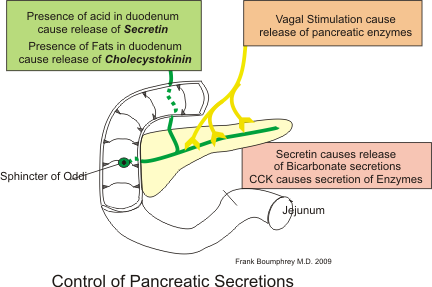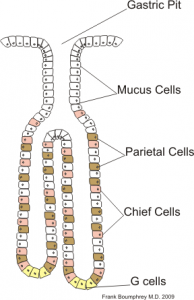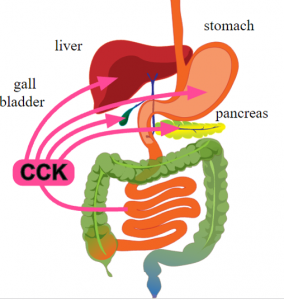16 Pancreatic function

General exocrine function
The pancreas has four main exocrine functions:
-
Enzymatic digestion of food
The pancreas stores the enzymes in zymogen (inactive form). Zymogens are stored in zymogen granules with other enzyme inhibitors.
When the zymogens reach the duodenum, trypsinogen is activated by the endopeptidases. Trypsin then further activates all enzyme types (amylase, trypsin, chymotrypsin, carboxypeptidase and lipase). The process is enhanced by higher levels of calcium in the intestines.
2. Production of antibacterial proteins
Bacteria are kept in control by proteins released from the pancreas. The bacteria are also impacted by gastric pH, other bacteria and peristalsis.
3. Neutralization of gastric acid
The pancreas releases sodium bicarbonate which helps neutralize the gastric acid that reaches the duodenum.
4. Production of intrinsic factor
Intrinsic factor is needed for absorption of cobalamin. In most of our species, it is primarily produced by the pancreas.
Cobalamin (vitamin B12) has a very complex absorption process. It must be first bound to an R protein. This is degraded by the pancreatic enzymes. Now it is bound by intrinsic factor which carry it to the ileum. Receptors in the ileum bind the intrinsic factor and enable absorption.
Cobalamin is required for proper red blood cell formation, brain function and DNA synthesis (basically all growth).
Control mechanisms

Gastrin

Gastrin starts the process of protein digestion by stimulating the release of HCl from parietal cells. Gastrin is produced by G cells in the gastric pits. It is released when there are higher levels of calcium and/or peptides in the stomach.
Cholecystokinin
Cholecystokinin (CCK) is produced by the duodenal enteroendocrine cells and stimulates the release of bile from the gall bladder and pancreatic enzymes from the pancreas. It is released due to the presence of partially digested fats and proteins in the duodenum.

Secretin
Secretin is produced in the duodenal S cells and stimulates the release of sodium bicarbonate from the pancreas. It also inhibits gastrin release from the stomach. It is released when the duodenal pH is low (acidic).
Resources
Pancreas function, enzymes and role in digestion – video
The pancreas– CSU vivo site

